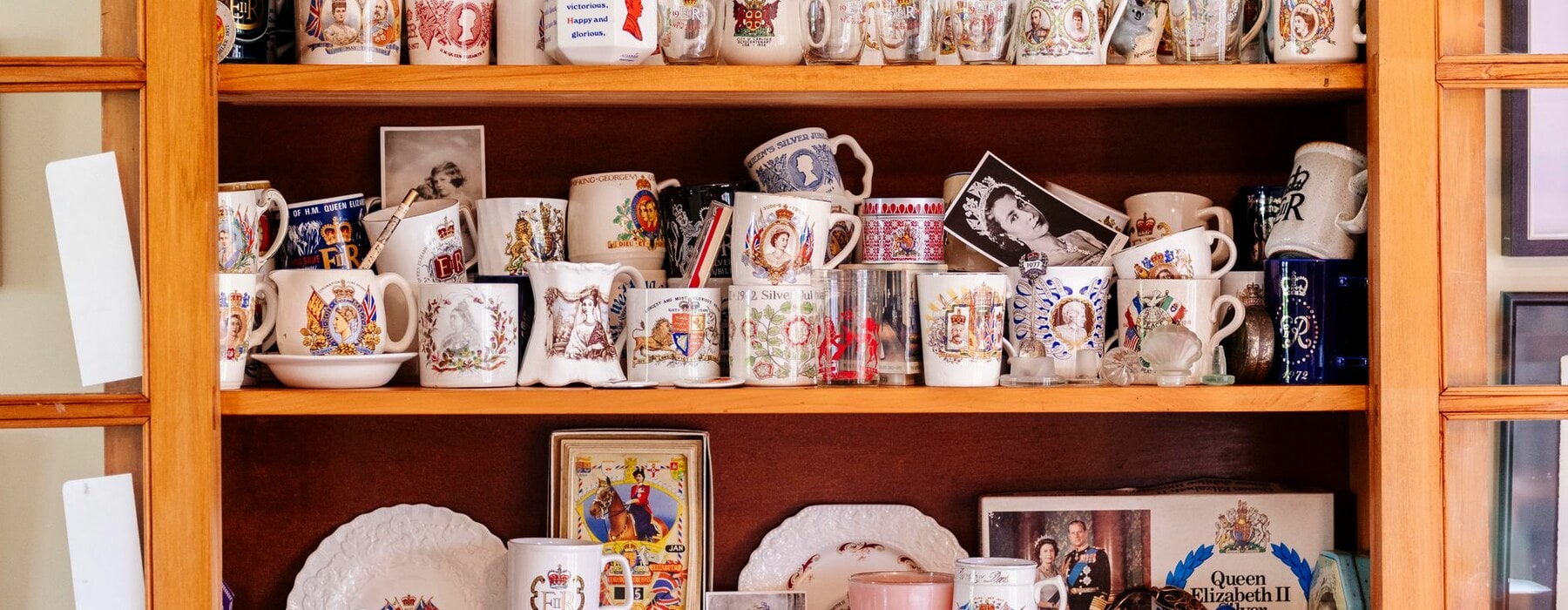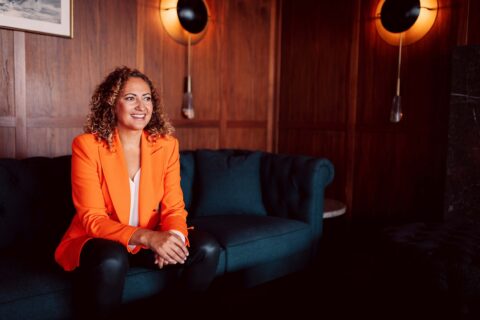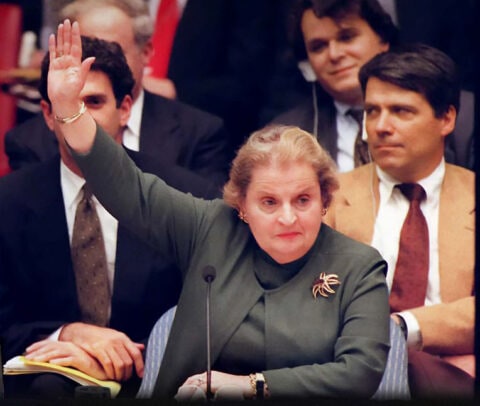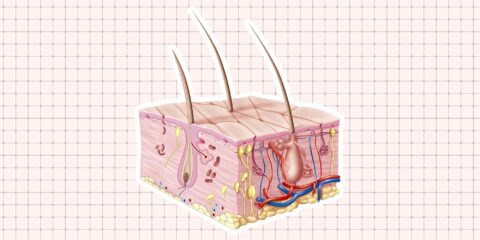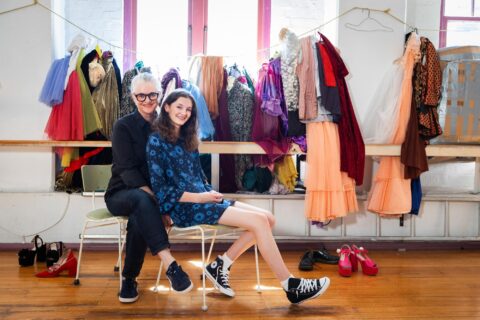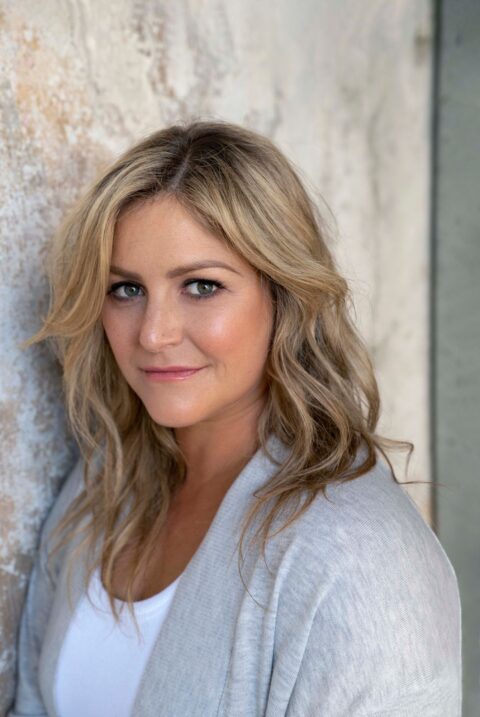The treasured objects people choose to display in their homes tell a story. Julie Jacobson asks Kiwi women about the meanings behind their mementos.
Years before my mum died, she asked me if I wanted my grandmother’s treasured pink and white milk glass epergne.
I’m a big fan of Japanese simplicity and sleek Scandinavian design, so everything about this frilled floral centrepiece screamed ludicrous. But, me being me, I didn’t have the heart to say no, so it was carefully wrapped in newspaper, packed in a suitcase among my clothes and transported from her house in Akaroa back to mine in Wellington.
I’ve since moved, at least twice. The last time I saw the epergne was when I left it – albeit with fitting ceremony – under a hedge in a suburb that shall remain anonymous. I still feel guilty about it.
I daren’t watch Antiques Roadshow in case its twin turns up, one of only two left in the world. My own prized possessions range from a tiny china panda that has been part of every home I’ve lived in, to my son’s baby teeth, kept in a small, silver-topped glass container once owned by a great aunt. Here, I’ve asked five fellow collectors to show off their most beloved belongings.
Jess Ault
PHOTOGRAPHY MANAGER & EXECUTIVE ASSISTANT, AUCKLAND
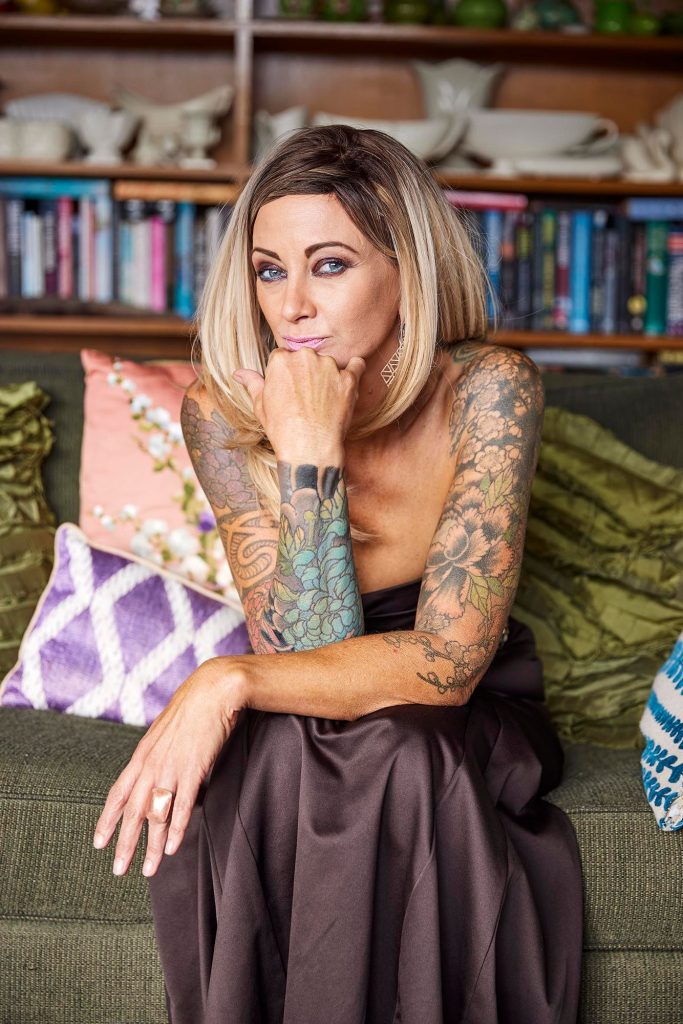
I’m a pretty no-holds-barred type of person; I show my personality in the
way I look and have always been that way. I think my possessions reflect that – they express my eclectic personality, I suppose.
I guess I should say my children are my most prized possessions, but there’s some pieces from my grandfather’s estate that I just adore. He was an Anglican archdeacon and a missionary in India, and I have a lot of really lovely religious pieces from him, including a beautiful brass crucifix.
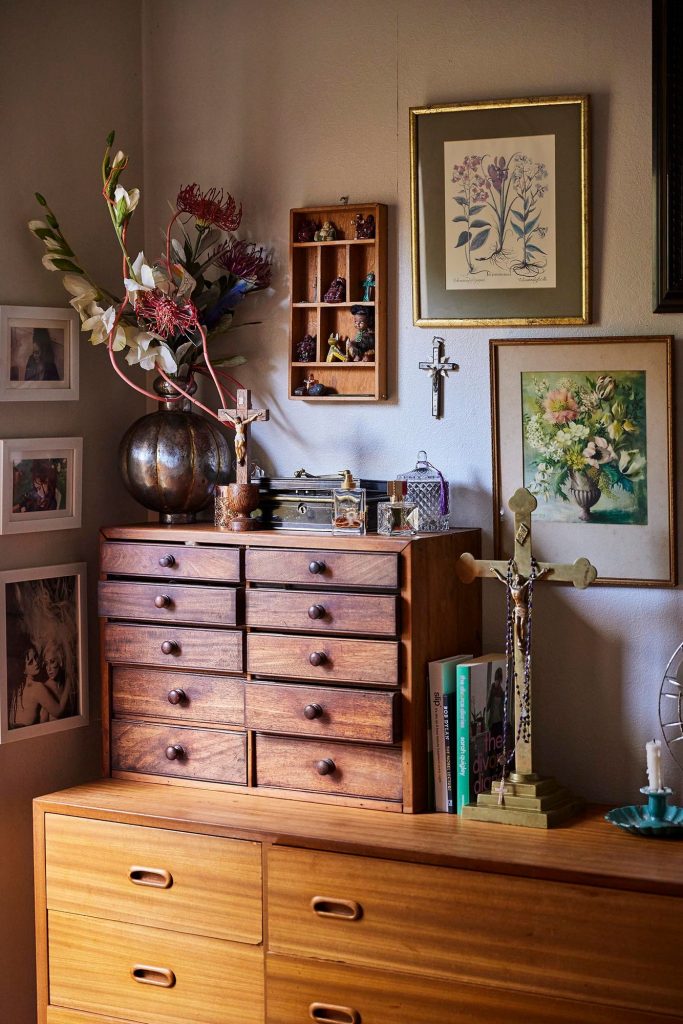
Then there’s my collection of Crown Lynn and Wedgwood. I grew up in Christchurch and as a film school student I’d go to second-hand shops for clothes and just starting picking up bits and pieces that I liked. There was a while there when I would go to second-hand shops several times a day – it got a bit out of hand.
The Crown Lynn wasn’t something I fell into easily. My ex-husband had some and I was a bit ho-hum about it at first. We lived in a house with a lot of panelling at that stage; it was just white and stark and didn’t really go with the earthy tones of the house. But over the years I’ve somehow managed to amass quite a collection of it. One or two pieces don’t look right, but en masse it makes this big, beautiful statement. I had a bit of a thing for teapots for a while. It started with one that was the most divine pea-green colour, made by a New Zealand ceramics studio. Sadly my ex smashed it in one of his rages!
There’s another, dripping with a rich crackled glaze, which I love, and the one with the fish is very apt, as I’m a Pisces. I still collect anything I find in the pea green colour – it’s so fresh and vibrant.
I paid almost $100 – hugely expensive for a second-hand shop – for a Royal Winton teapot, sugar bowl and a little cream jug, in the same Hazel pattern as a toast rack my parents had.
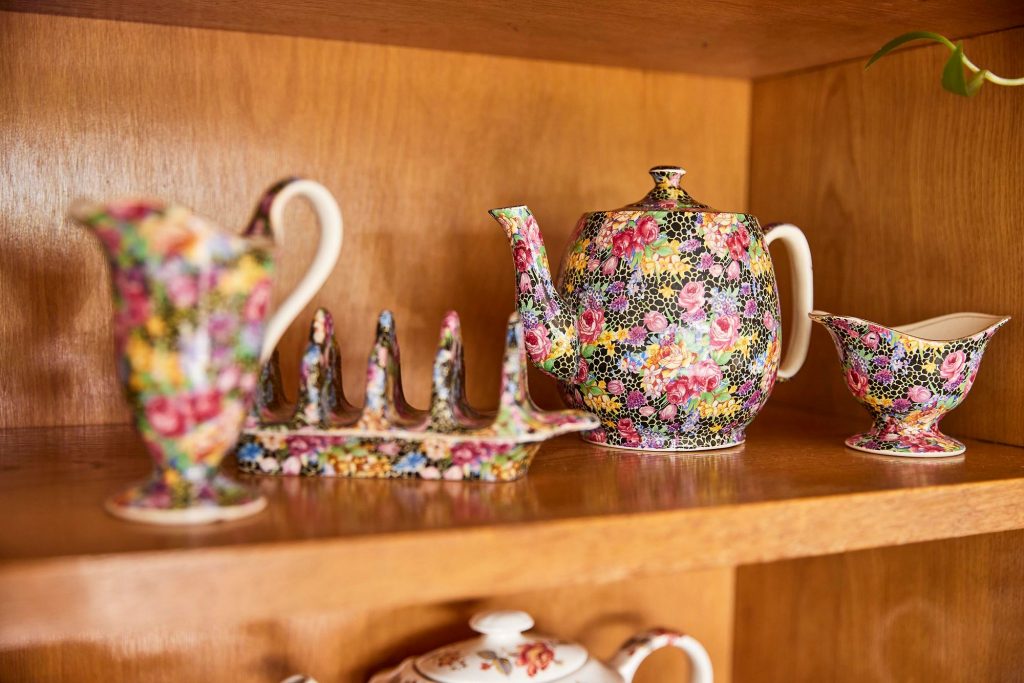
I later found out that the toast rack Mum and Dad had, which they gave to me to put with the set, was a replica and not the real thing – all this time I’d thought it was the same. It turned out the teapot alone was worth $900 so I was pretty stoked about that.
I used to walk past the shelf and move things until I had them in the right place. Now if I move anything, it just doesn’t look right and I feel quite unsettled. I have a number of pieces an ex-lover, a potter, made. As well as many other women around New Zealand, I amassed a number of his pieces over my tenure, so there are some little bowls from the beginning of the relationship and a bird that was a parting gift on one shelf. My girls sometimes move those when they are filming TikTok videos and I always notice.
I don’t know how to explain it, but my collections bring me warmth; they have a familiarity and evoke memories – of where you might have been or what stage of your life you were at when you got them.
I have a very particular aesthetic; it’s a bit like how I feel about music – I just like what I like. I very rarely see new things that strike a chord with me. I enjoy the story behind the pieces: How did they come to be in this second-hand shop? Did someone just want to get rid of them? What did they mean to the previous owner?
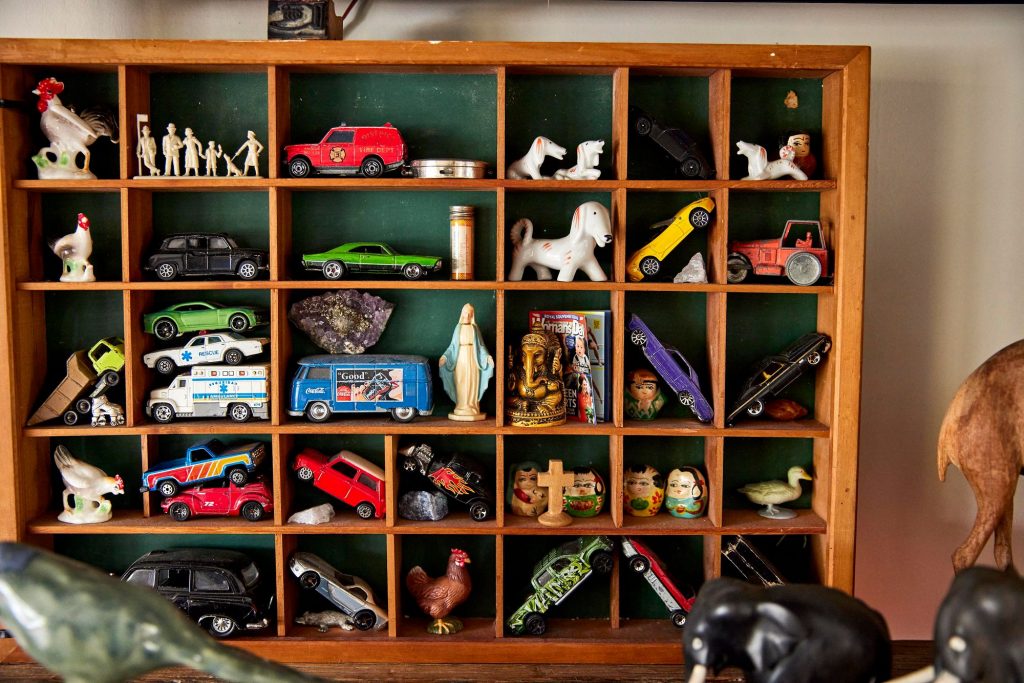
Most of what I have predates “Made in China”. They’re beautiful, handcrafted objects that took time to make and, when they were first bought, were probably expensive and very precious. They might have been wedding gifts or meant something very special to their owners.
I think about my parents’ house and everything they lost in the Christchurch earthquake. The things I’ve collected are still around. They mean something to me now. And that’s pretty cool, really.
Leianda Lakin
HR CONSULTANT, AUCKLAND
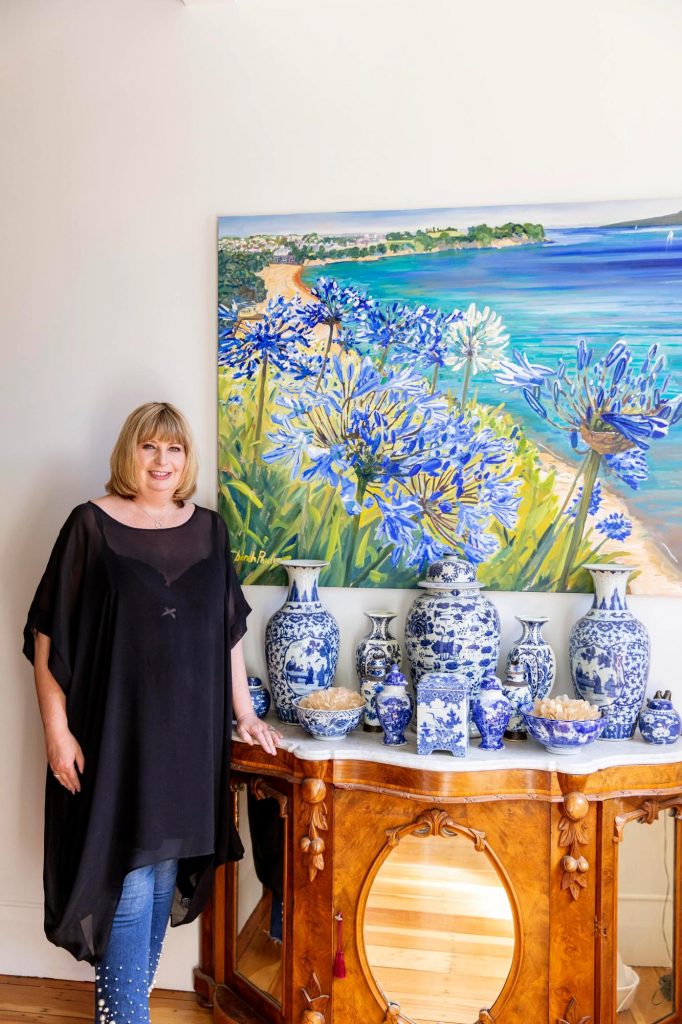
I think the relationships we have with family, friends and loved ones, and the experiences we share, are more important than any possessions. That said, I’m an avid collector. I was fascinated by antiques from an early age. I remember as a 10-year-old seeing an Omersa leather pig in a magazine – Omersa started making these for Liberty of London in 1927 – and promised myself that when I grew up I would buy one.
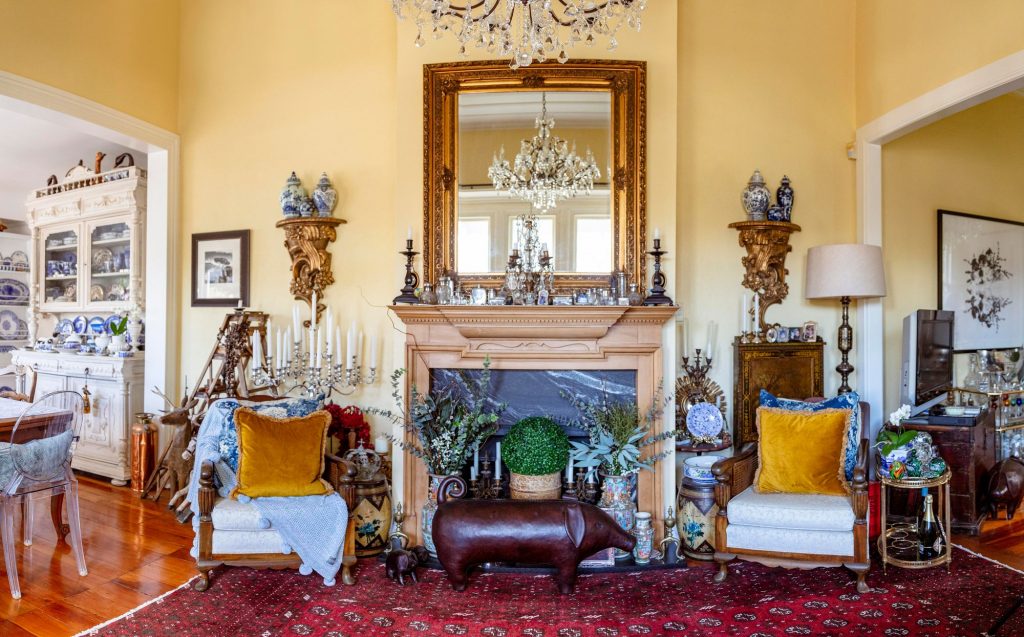
It took me 30 years, but it’s one of my most treasured possessions – along with my blue and white china, my collection of silver snuff boxes, cigarette cases and perfume bottles, my Tunbridge ware and other assorted wooden boxes, my 1960s vintage drinks trolley and my 19th century French marble butcher’s table. Do they reflect my personality? Absolutely – eclectic and maybe a bit eccentric! The butcher’s table, like everything else in my house, is covered in stuff. Randomly I’ve added three matchbox cars that I recently found that belonged to my late partner Tim. When he was alive I wouldn’t let him have them in the house, but now he’s gone they are a nice reminder of the things he loved. He died of a brain tumour in 2019; we were together 24 years.
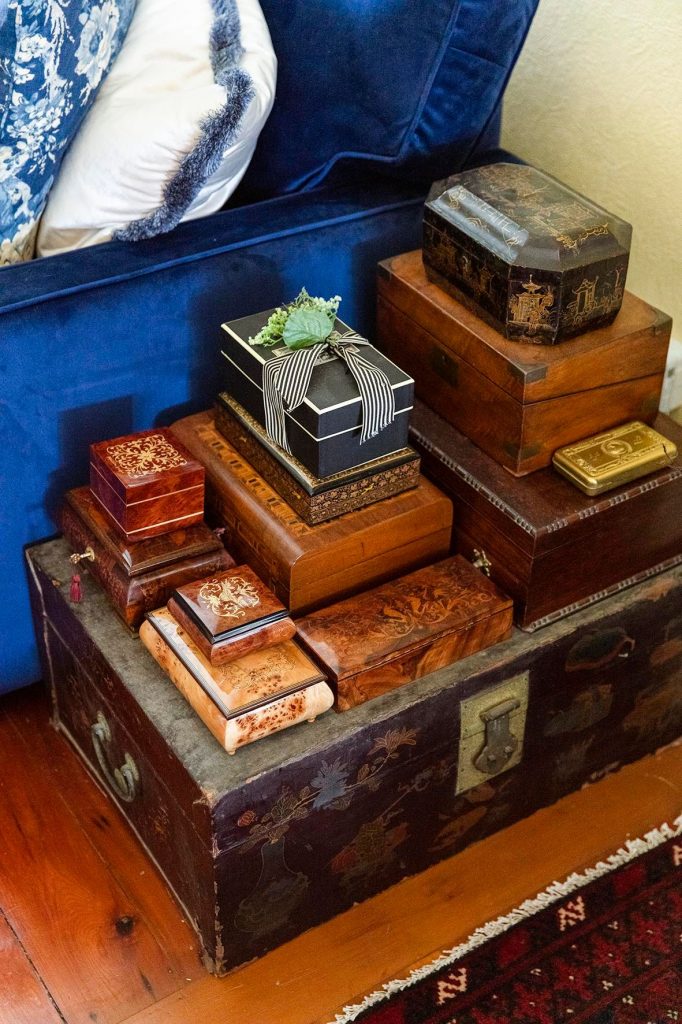
I like to research the provenance of an item and think about who might have owned it, what was happening in the world at that time, and what life would have been like for the person who owned it. I’m also hugely sentimental. Most of my treasures have been bought on overseas holidays or are gifts from Tim or other family members. When I look at them, I remember exactly where in the world I was when I bought them or which celebration they’re associated with. I have happy memories of fossicking around antique stalls in London’s Portobello Road, hunting through junk shops in Dublin and finding gems on the back roads of the Amalfi Coast.
Tim bought me most of my wooden jewellery boxes, so they have special significance, especially two silver-topped olive wood boxes bought from a small curiosities shop in Sorrento on our last trip to Italy before he died.
I was about 15 when I started collecting blue and white china, and a lot of the pieces are birthday presents from my sister and parents. The very first piece I bought was a Spode plate from Tanfield Potter in Queen Street back in the ’80s. It was a really fab shop specialising in fine china and antiques.
I also had a collection of Crown Lynn. Within a year of getting the collecting bug, I had about a dozen swans and so many vases I lost count. They used to be displayed in my office; every piece was plain white and it looked great, but when I left that job the collection sat in a box in a spare room. As much as I loved the collection, it was out of kilter with my English and French antiques at home, so reluctantly I decided to sell them on. I don’t really follow fads and trends. It upsets me to see people constantly updating and replacing their furniture and household items – recycling and buying second-hand is much better for the environment.
Dena Henderson
FORMER JOURNALIST, SECOND-HAND SHOP & CAMPGROUND OWNER, PALMERSTON
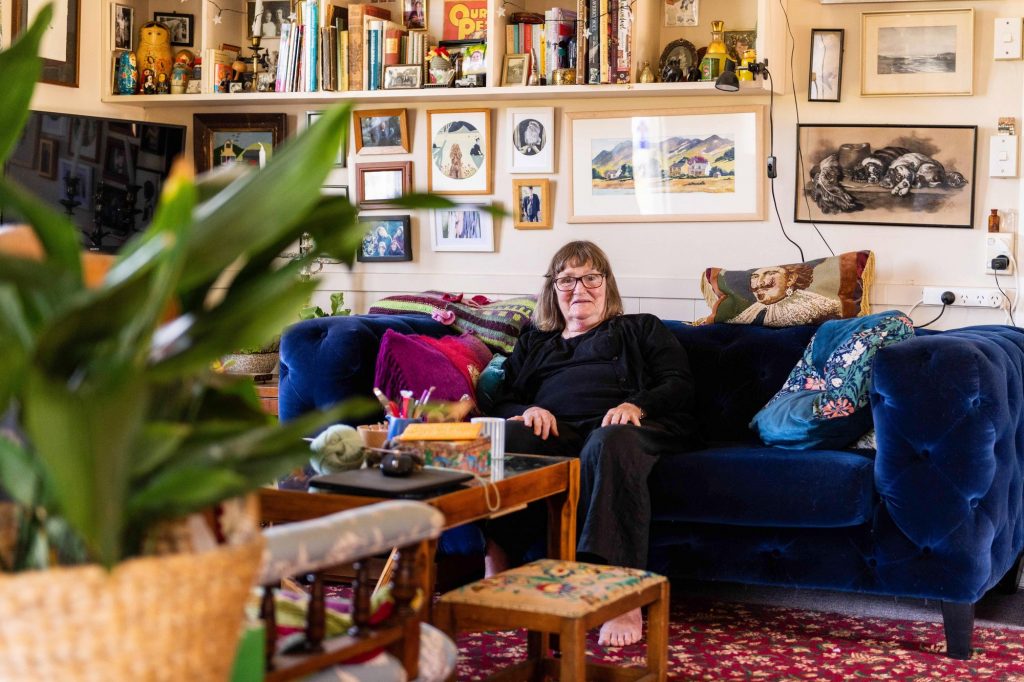
I’m not sure when I became a collector. In fact, I think that’s far too grand a word for the random pile of beloved objects I’ve amassed around me over my 75 years.
“Hunter-gathering” describes my love of obtaining appealing objects far better. For instance, even though I have never been and probably never will be religious, I’ve somehow acquired a small collection of religious icons. As far as I can recall, it began with the nativity scene that adorned my English childhood Christmases, and which arrived in the rather sad collection of my mother’s possessions that came to me after she died.
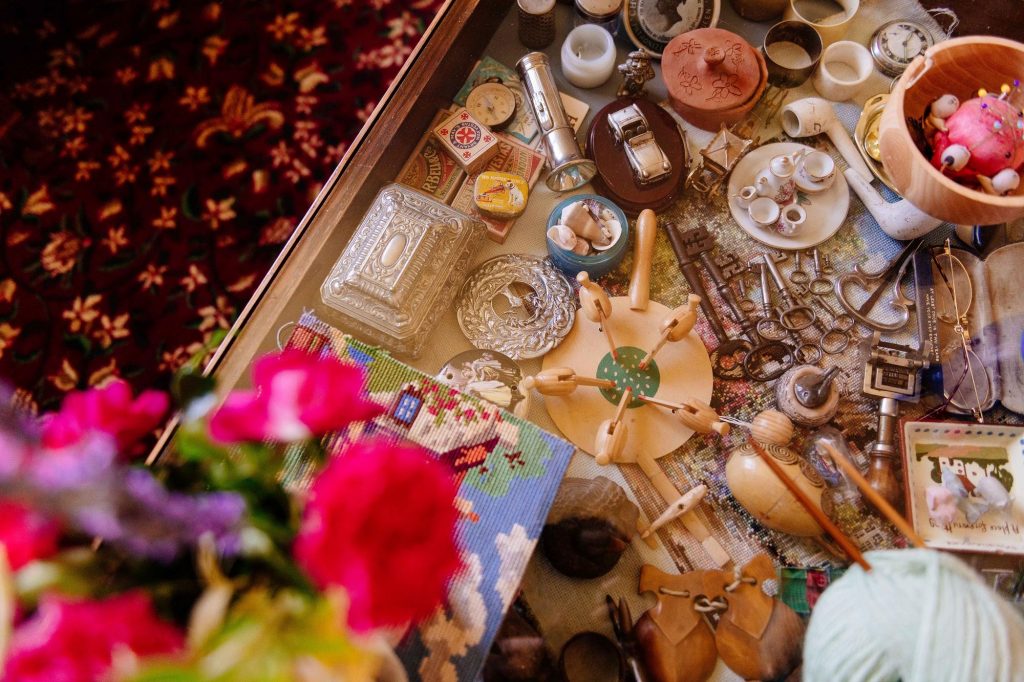
It includes many of the famous nativity crew but, despite its sentimental past,
I have to admit it is not very attractive. It is made of not particularly high-quality plaster, so these days nearly all the pieces are chipped, the colours are faded and Joseph is none too steady on his feet. They spend most of the year wrapped
up in tissues in an old Tupperware box waiting for their annual outing, when they are joined by a donkey, a praying Mary candle holder, a reasonably pretty Mary and another in a plastic one-gated grotto (there were two gates, but one is long gone), a wind-up nun plus a few other treasures. This year, though, I feel they may be somewhat dwarfed by the Joseph and Mary plus baby which I knitted (badly) during lockdown. Another week and I would have plucked up the courage to tackle the donkey!
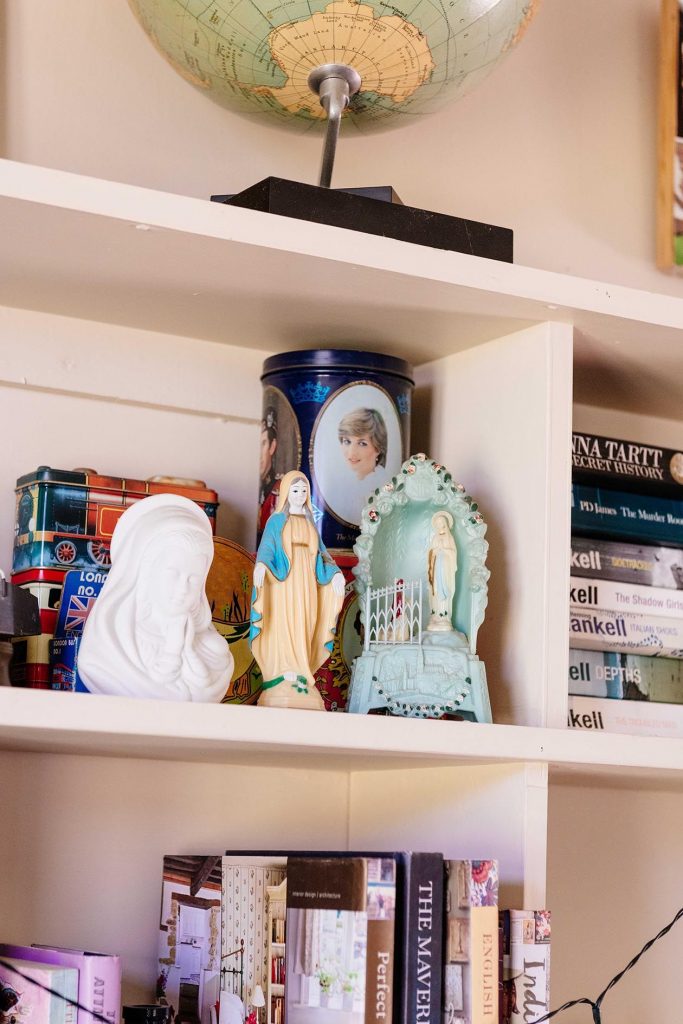
Naturally, I have the usual old-lady collection of pretty but annoying china which I can’t put in the dishwasher, so it spends most of its life on display in my dresser. Alongside that are a couple of plaster figures: there’s Queen Victoria (which dates from the 1990s, when my husband Keith and I owned a second-hand shop) and Mozart, plus a random gathering of animal-inspired jugs which took my fancy.
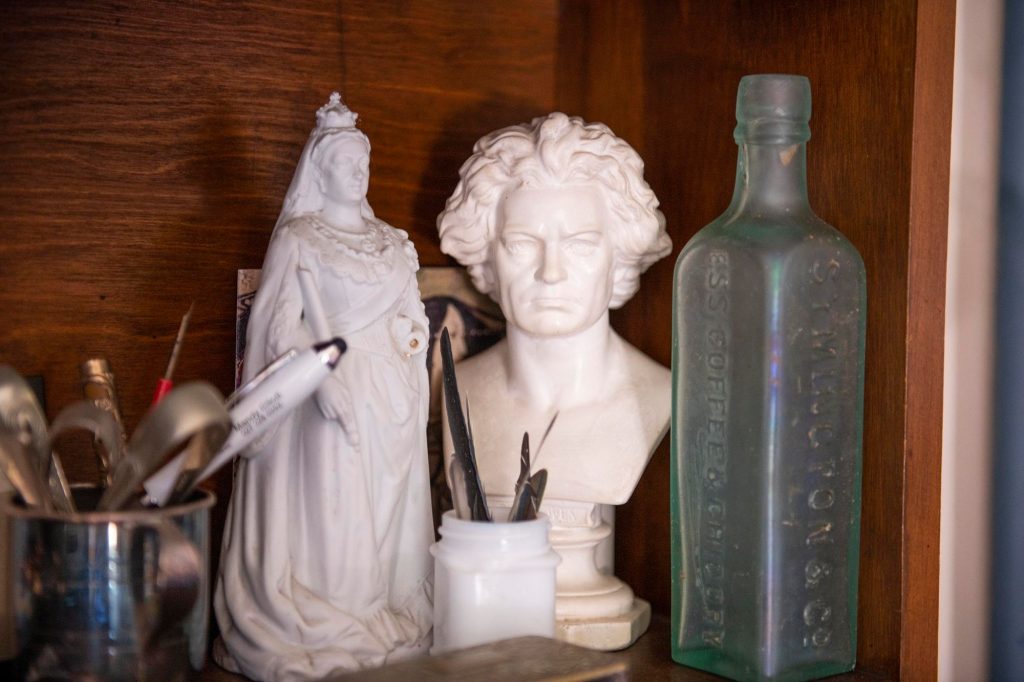
Recently I’ve become attracted to rather crudely made and brightly decorated yellow china, mostly with an animal theme. The advantage of this is that, so far, it doesn’t seem to be very sought after, so is affordable at the moment.
I’m particularly fond of my Captain Cook jug, which has fake flowers in
it to hide his broken hat. It was found by my son John in a roadside dump near Kaikōura.
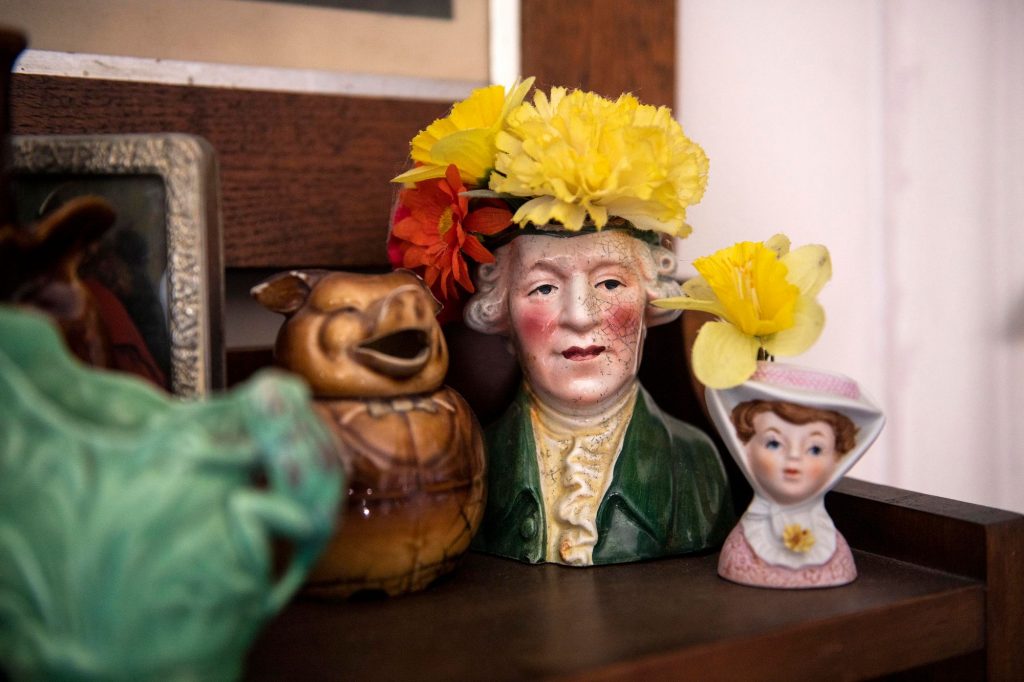
I’m not at all fussy; the odd chip or crack doesn’t bother me, which has enabled me to buy things pretty cheaply. Of course, this makes much of my stuff less valuable but, in a way, I love my imperfect objects more. Objects that have to spend their lives locked away, sometimes even hidden from view, have no appeal to me at all. They become “things” with no purpose except to lock up money and worry their owner in case they break, fade or get stolen!
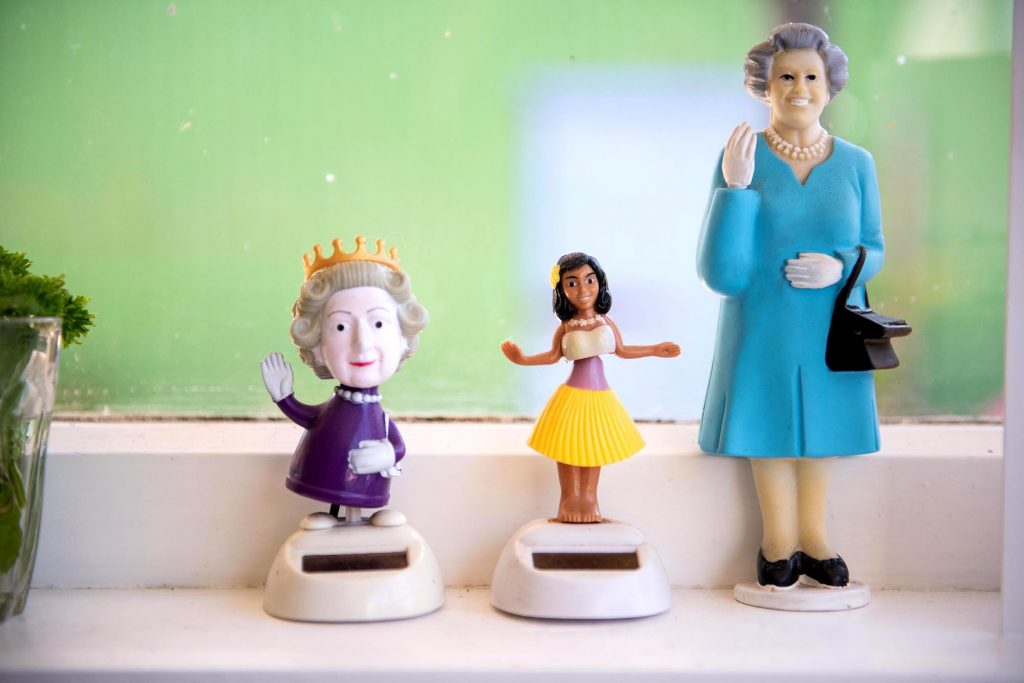
I collect for the pure pleasure of having lovely objects around me which I can use and love and give away to others who find them beautiful too.
Linda Burgess
WRITER & FIRST ALL BLACKS WAG, AUCKLAND
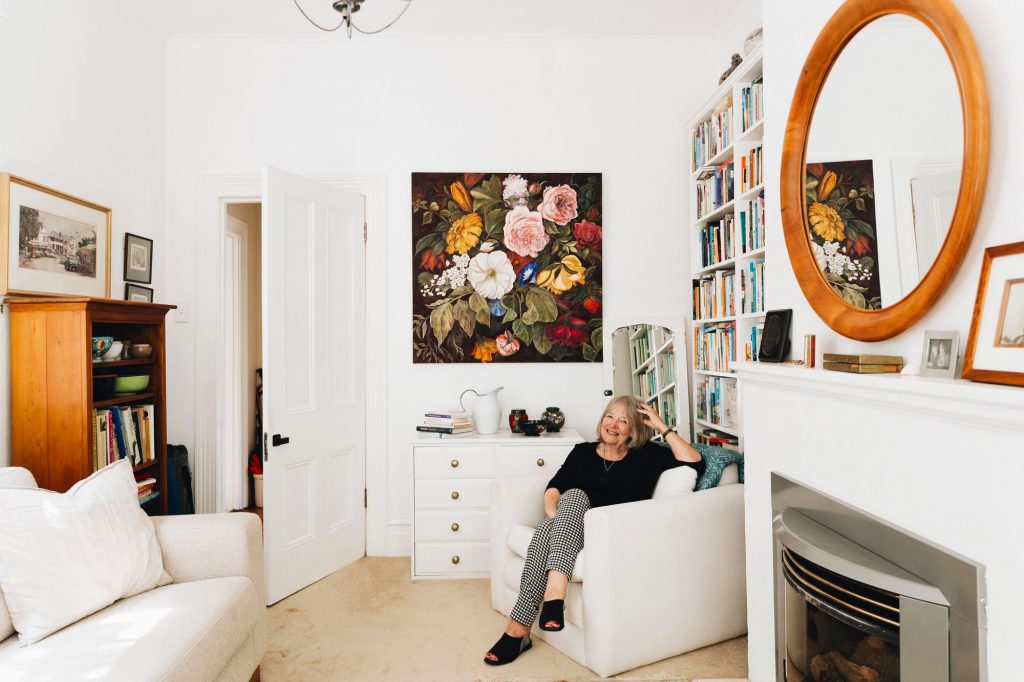
I’m not a particularly sentimental person and I’m also pretty picky. I don’t buy
for the sake of having things, and am increasingly inclined to declutter. But I do like to be – need to be – surrounded by things that please my eye. I love the domestic. William Morris said, “Have nothing in your house that you do not know to be useful, or believe to be beautiful” – it’s a catchphrase of the Arts and Crafts movement with which I totally agree.
My mother liked nice things, but having been a child during the Depression, she grew up in a family who didn’t have much. She found it exciting to acquire things as a result. She loved a bargain, whereas I’m more inclined to have one cashmere jersey rather than five from Glassons.
I used to have inherited jewellery that I loved, but one piece was lost when it was in being fixed, and other pieces were lost when we were burgled. So I try to have treasures now that burglars don’t want.
Books are my treasures and I have thousands. I do weed occasionally, but nothing gives me more happiness than a full bookcase – and the fact that eight of the books I own are written by me!
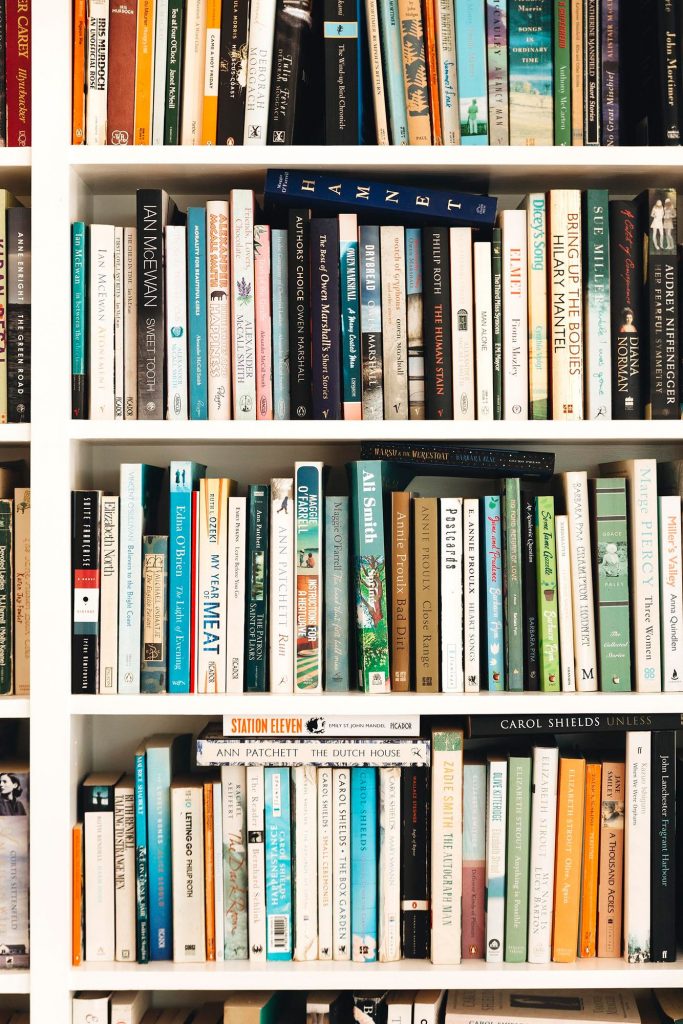
My mother’s face powder container, from the 1930s, is in my bedroom. It’s both plain and elegant and of course reminds me of her. I used to love opening it and looking at the loose powder and the velvet powder puff. It’s so very glamorous and seemed the epitome of grown-up-ness. I don’t have powder in it – or anywhere! – but it still smells of her.
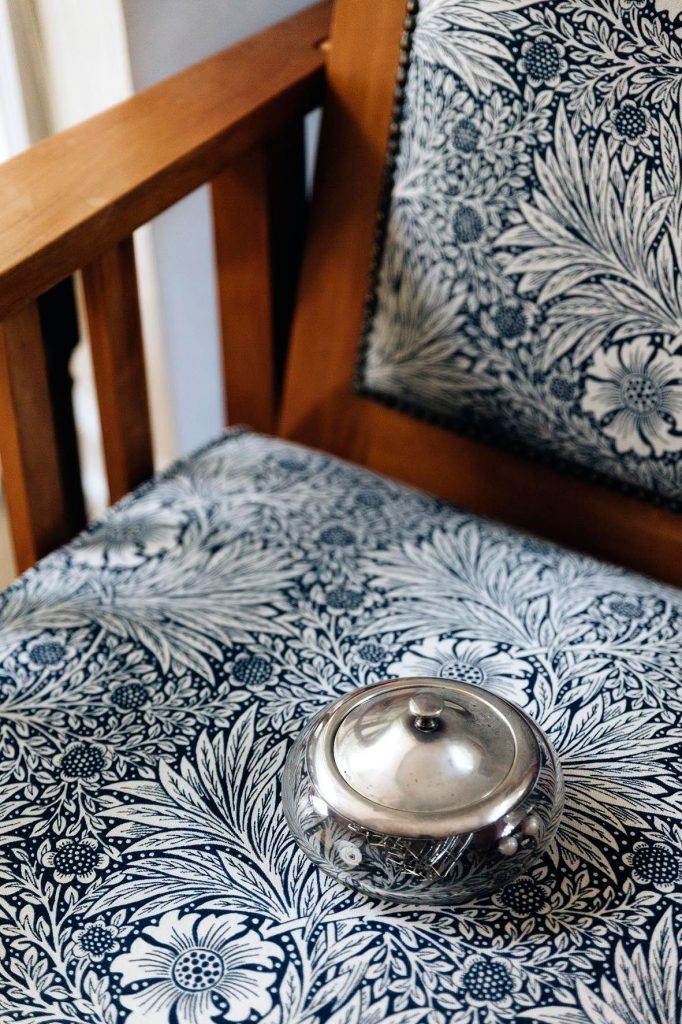
Also, Mum’s china cabinet. Again, it is plain and beautiful – oak and clear curved glass. It’s in the entrance to our living room. And then there’s Robert’s [husband and former All Black, Bob Burgess] mother’s bread board, also from the late ’30s. I’m not sure of its provenance, but I always loved it and when she died I was fortunate that no one else claimed it.
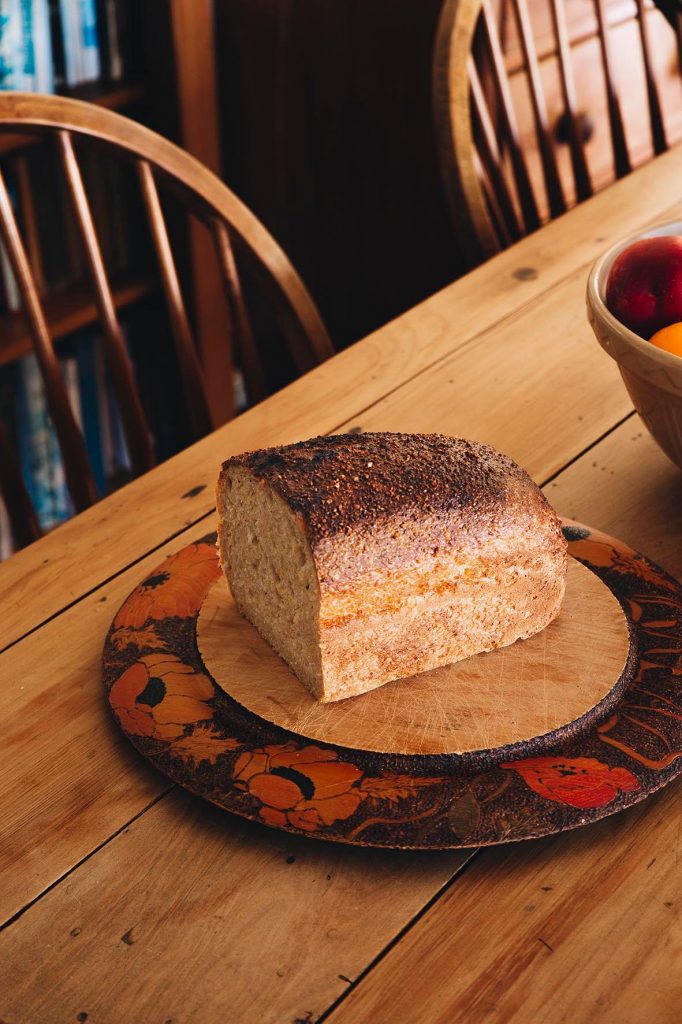
Well, I was very quick off the mark. It’s special in many ways – she made her own bread, which her grandchildren all loved. And it’s handmade; it’s poker work, with really lovely, rich orange and red poppies on a speckled background around the edge. It annoys me that I never asked her who’d made it. I also have a slotted spoon that Robert’s grandmother, an esteemed baker, used. It must be at least 100 years old.
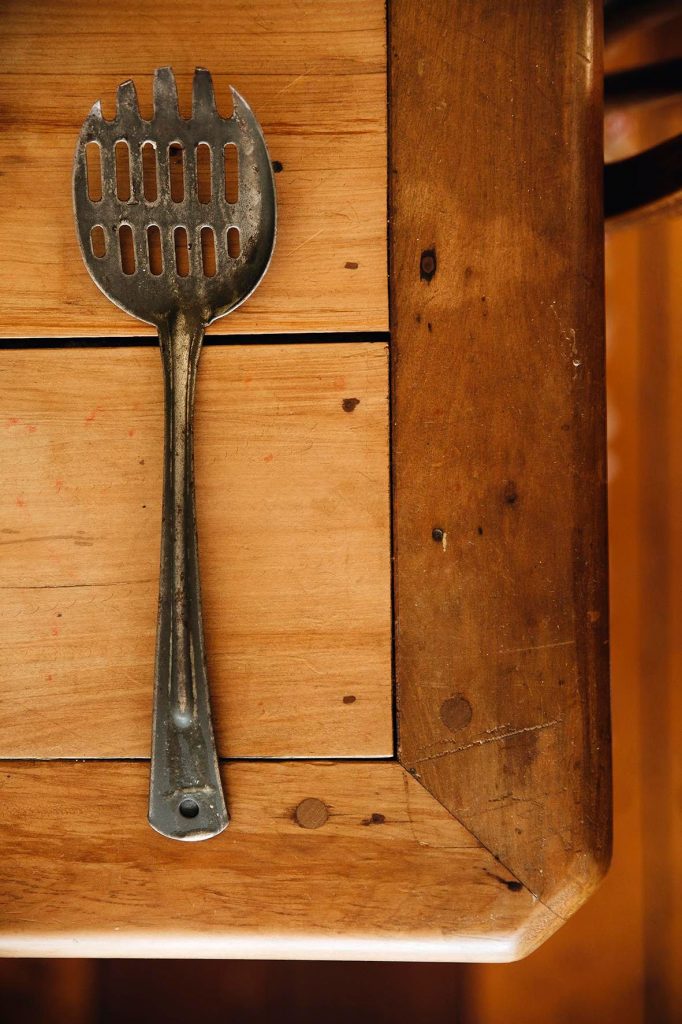
I love art and wish that I’d collected the work of illustrators of children’s books, as illustration is my favourite sort of art. This is why I love Anna Crichton’s black and white drawing that accompanied an extract from my first novel that was published in the long-gone literary magazine Quote Unquote. I told the editor, Stephen Stratford, that I loved it, then he told Anna and she sent it to me.
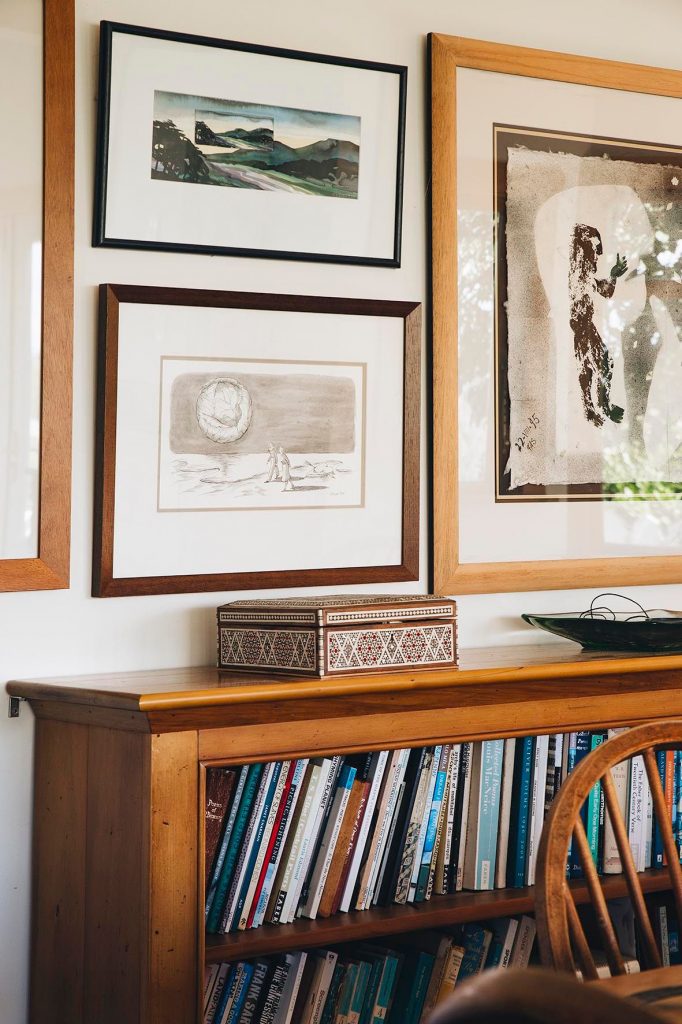
The generosity of her gesture remains with me. It hangs behind the dining table, along with other art – some original, some prints, all New Zealand. My other favourite piece of art is by my good friend Robyn Laing; it’s a fabulous flower painting. We stopped being play centre mothers and became “creatives” at the same time, and when I got a good grant from Creative NZ one year, I used a bit of it to buy her painting, which hangs in our sitting room.
I have a pounamu key which I often wear and it’s made by our very talented son-in-law Joe Sheehan. I love it and would hate to lose it. I went off it just a bit when John Key was prime minister, in case people thought I was making a statement of support – I no longer have to worry about that. Everything Joe makes is both beautiful to look at and lovely to touch.
And, of course, my family – husband, children, their partners, and our four grandchildren – are my biggest treasures. Oh, and Sunny, our grand-dog.
Sam Henderson
PHOTOGRAPHER, PALMERSTON
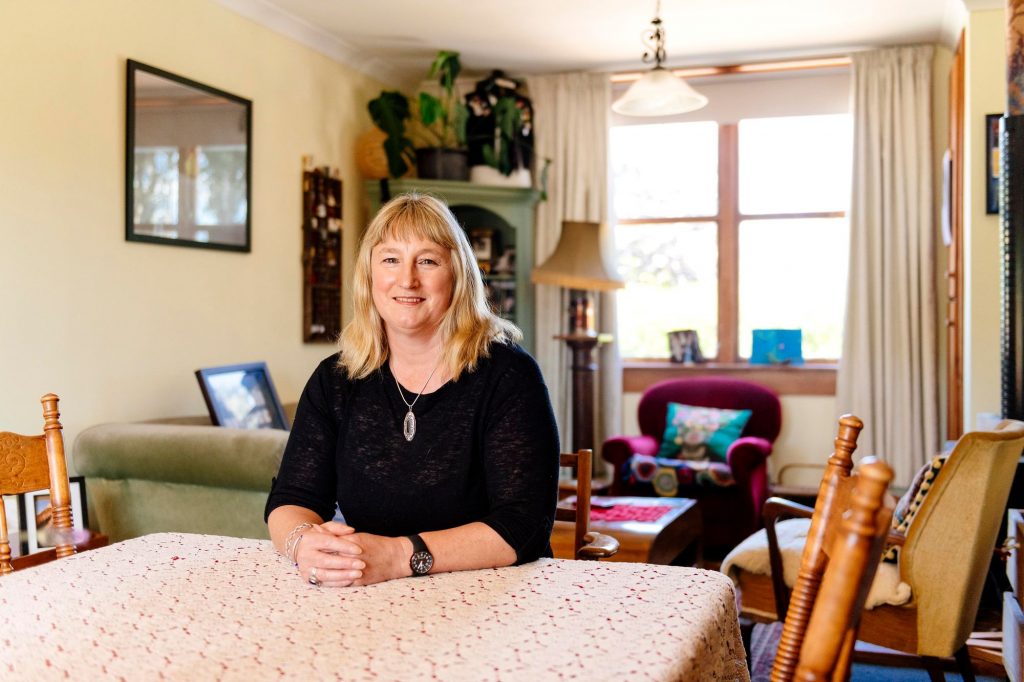
In 1977, the Queen and Prince Philip visited New Zealand as part of a Commonwealth tour. It was hugely exciting – even more so when my parents, my brother, three sisters and I squashed into a car without a seatbelt in sight and made the long and slow journey from West Otago to Invercargill.
It was pouring rain, but there were hundreds of people lining the route of the royal parade. We stood in the deluge and watched in awe as a waving lady wearing gloves drove past in a big black car. We got a day off school and for an 11-year-old that was really special.
Years later, I found myself in the UK living with a friend who was a very serious collector. There were many early morning starts to car boot sales in the north of England; I decided I wanted something of my own to hunt for, so as a bit of a joke – and because there seemed to be so many of them – I opted for royal mugs.
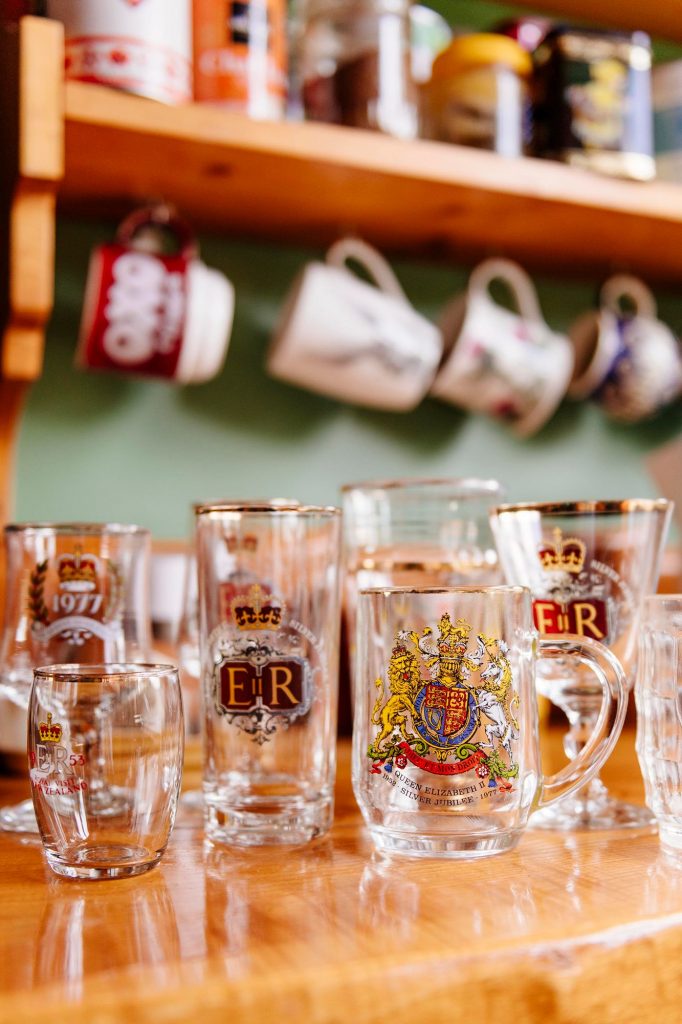
I set myself some rules: nothing would be purchased for more than £2, and I’d only buy things from 1977 or older. I also liked the items to have some function. It became a fun pursuit, and when people heard about this person who actually liked royal mugs, I became the recipient of a number of their grandmas’ collections. I soon had over a hundred mugs, and no two are the same. I also have glasses and plates, a couple of money boxes, jigsaw puzzles and tins.
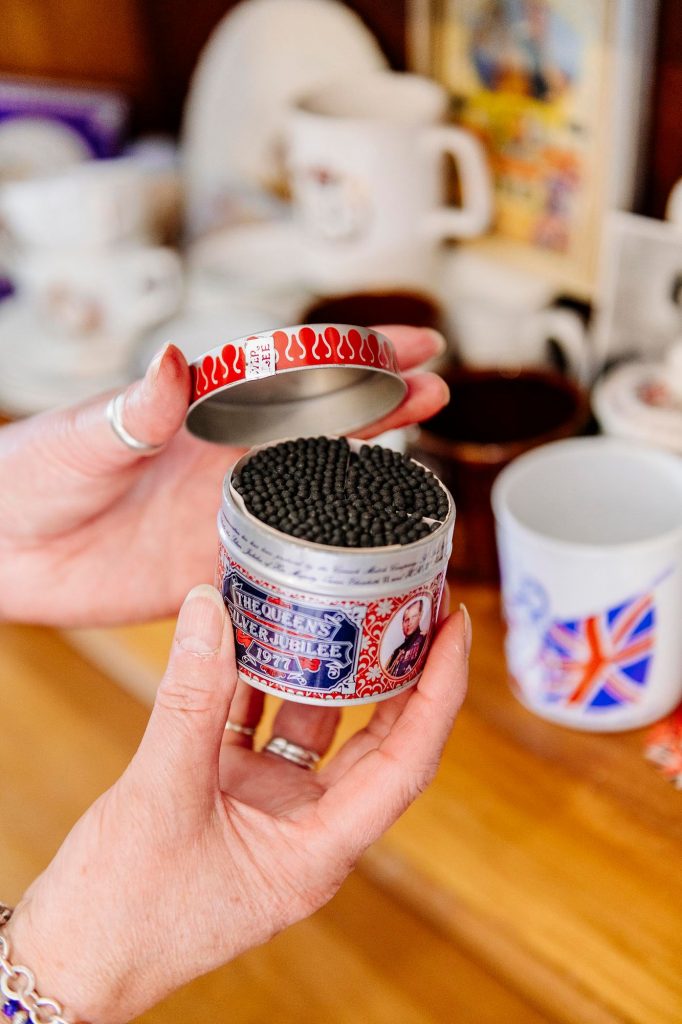
The mugs I have were all made in England. Some have never been used – they were on display, handed down, treasured by generations, then finally flogged at a car boot sale for 50p. Now, the royal souvenirs are all made in China.
I have china and glass representations of Queen Victoria, King George V and Queen Mary, King George VI and, of course, Queen Elizabeth II, made for events including coronation, jubilees, marriage and death.
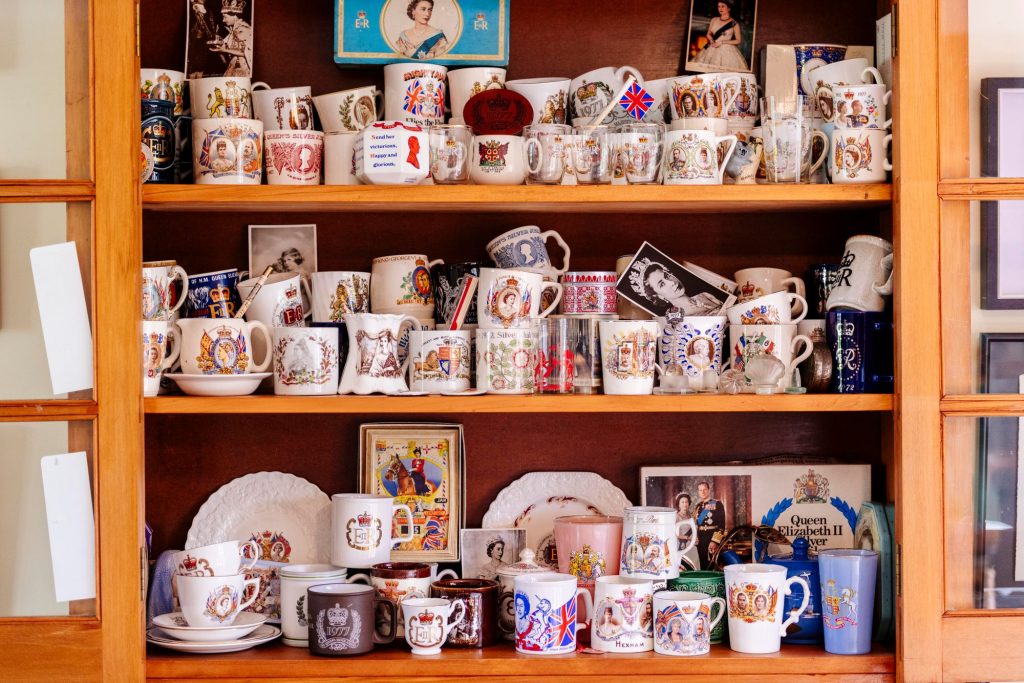
I have them stacked in a glass-fronted cabinet; they’re in no particular order but they delight me in their mass.
My most treasured object? That’s difficult, but I do rather enjoy drinking a wine from a gold-rimmed coronation wine glass and serving a salad in a Queen Elizabeth II coronation bowl.
My collecting has raised some interesting discussions, but I don’t see myself as a royalist at all.
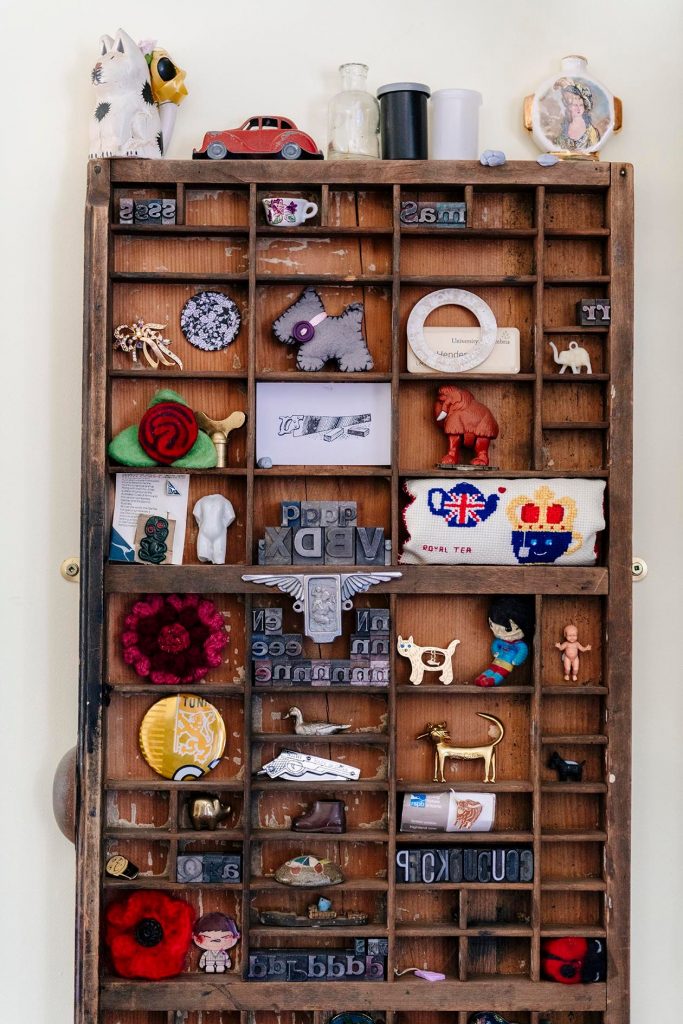
PHOTOS BY BONNY BEATTIE, LUKE HARVEY, ALEX LOVELL-SMITH

